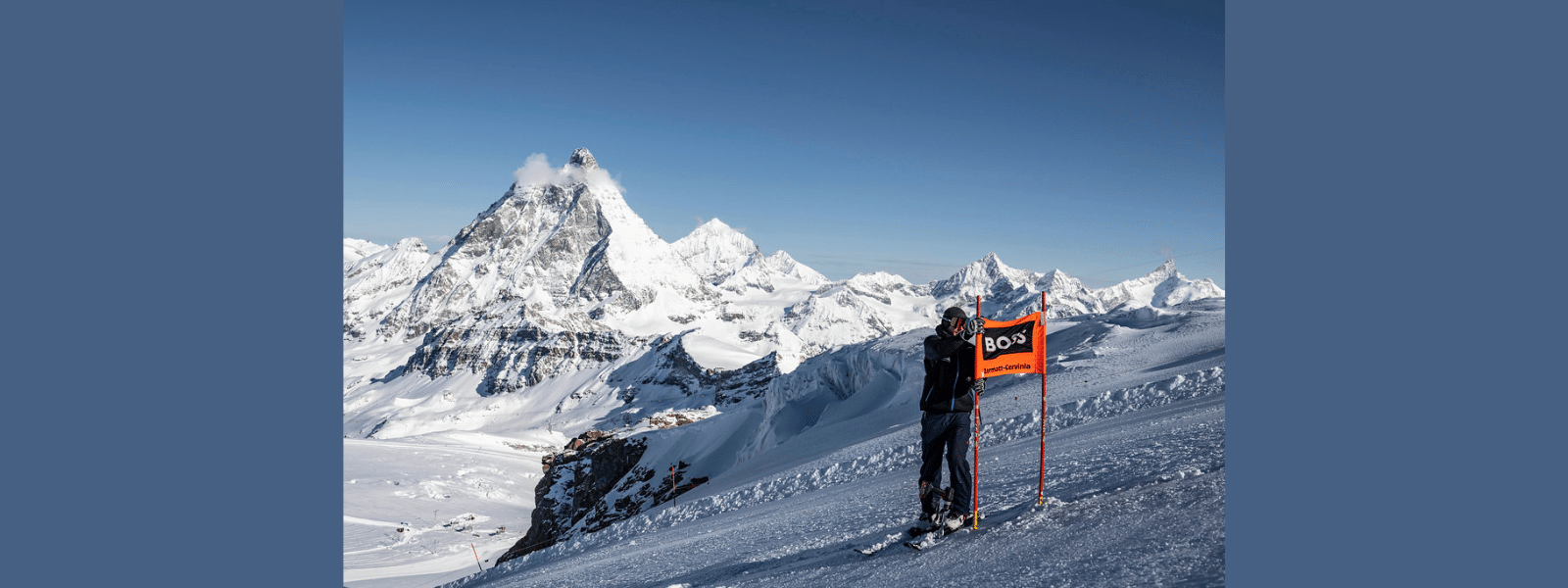Dorfmeister narrowly avoids on-hill collision in St. Moritz
Dorfmeister narrowly avoids on-hill collision in St. Moritz{mosimage}ST. MORITZ, Switzerland – A frightening incident marred the downhill portion of Sunday’s super-combi, as Austrian Michaela Dorfmeister nearly crashing into a course worker holding a shovel.
Dorfmeister was traveling at almost 80 kph (50 mph) when she narrowly missed the course worker, who was mistakenly in Dorfmeister’s line. The experienced 32-year-old Austrian reacted quickly, lifting her right ski and swerving closer to the gate to avoid him. She finshed 17th.
Swede Anja Paerson covered her mouth with her hands as she watched Dorfmeister’s run on the jumbo screen in the leader’s box.
International Ski Federation rules allow skiers to rerun a race or leg if they are distracted by officials, jury members or course workers during their run, but they must stop immediately.
The course worker, or officials who instructed him, could face sanctions, although Atle Skaardal, director of the women’s World Cup, didn’t think the individual should.
“It would be wrong to put the blame on one person,” Skaardal told The Associated Press. “He was working with the best intentions.”
Skaardal did say the organizing committee needed to improve its routine, but didn’t think it would be sanctioned either.
“But the organizing committee will officially apologize to [Dorfmeister] and provide an explanation,” he said.
“They are dealing with it,” FIS secretary general Sarah Lewis said. “It depends on the circumstance. They need to find out exactly what happened. It shows the importance of respecting instructions. This is the reason why access to the course is so limited and restricted – because the risk is there.”
World Cup races have television breaks after skiers No. 15, 22 and 30. Course workers use this time to slip the snow, or fix gates and advertisement banners.
Skaardal said a radio communication announced that racer No. 30 was on her way and that the course worker needed to fix a loose gate during the subsequent TV break. However, the worker understood the TV break had begun and it was time to fix the gate.
Lewis said only Dorfmeister’s quick reflexes prevented the kind of disaster that has happened before. In 2001, France’s Regine Cavagnoud died from head injuries after slamming into German coach Markus Anwander during a training session on Austria’s Pitztal glacier.
At the 1996 World Championships, downhill racer Tatiana Lebedeva and an American ski official each broke legs in a collision.
“At the time I just reacted. But at the finish my knees were shaking,” said Dorfmeister, adding that she was alerted to the danger by the crowd. “We are going at such high speeds. Mistakes like that should not happen. I’m happy I was healthy at the bottom.”
“My first reaction was how well she (Dorfmeister) reacted,” Lewis said. “Afterward, you think about what has happened before, where the consequences were so serious. This time, fortunately, it wasn’t.”
It was the second such incident in two days. In Saturday’s downhill, Anne Marie Mueller of Norway collided with an Italian trainer.
“I had such fear when I saw this,” Mueller said. “People who have been on the World Cup so long should know exactly where they should stand and at what time.”
The Italians were sanctioned for that incident.
“They have team radios. They are not in communication with the race jury or the organizing committee,” Skaardal said. “They should not have been moving from their position at the time. Everyone on the hill has to take responsibility for their acts.”
Several of the racers were furious.
“This must never happen again,” said Renate Goetschl, Dorfmeister’s teammate. “It’s complete madness.”
“Here in St. Moritz they showed what we don’t want to have happening,” Paerson said. “It’s two days in a row. I don’t know what is going on with the teams and FIS at this race but it’s not OK. We have seen bad accidents in the past.”
Skaardal said more needed to be done to make organizing committees from various events, coaches and media aware of the dangers involved in speed races.





















